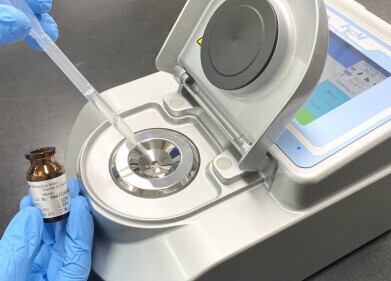Laboratory Products
What Caused the Plague to Spread?
Mar 02 2018
Killing an estimated 75 to 200 million people, the "Black Death" was once of the worst outbreaks in the history of humankind. The bacterial disease swept across Europe in the 1300s and continued to return for centuries. While the blame has largely been placed on rats, a new study suggests that they may not be the culprits. Instead, it targets human fleas as the main cause of the Black Death.
The disease is caused by bacteria known as Yersinia pestis, which target rodent hosts like rats, prairie dogs and ground squirrels. Katharine Dean, a Doctoral Research Fellow at the University of Oslo's Centre for Ecological and Evolutionary Synthesis explains that while rodents do become infected, they don't fall sick. As a result, they act as a reservoir for the plague.
Inevitably, the rodents are bitten by fleas which ingest he bacteria and become carriers. While other rodents were often next in line, back in the 1300s humans were also on the menu. “Plague is not picky,” explains Dean. “It’s amazing that it can live with so many hosts and in different places.”
Playing out potential death count scenarios
According to Dean, there are three main scenarios that see humans become infected with the plague. They can be bitten by a rat flea carrying plague, bitten by a human flea carrying the plague or simply catch it from another human via coughing or vomiting.
As well as analysing death records for nine cities in Europe between the 1300s to the 1800s, Dean and her team also designed computer models capable of predicting what the deaths from each scenario would look like. Interestingly, the model that calculated deaths based on a scenario where the disease was spread by human fleas and lice was most accurate.
Poor human hygiene pegged as a major culprit
So, while rats did play a role in spreading the plague, environmental factors like poor living conditions and personal hygiene were the biggest cause. The results were published in the Proceedings of the National Academy of Sciences and suggest that rather than developing new vaccines or culling rodents, sanitation is one of the most effective solutions when it comes to fighting disease.
Studying historic outbreaks is a critical part of predicting and preventing modern diseases. Of course, laboratories play a key role in the process. For a closer look at how laboratory machines are now merging with 21st century technology don't miss 'The Internet of Laboratory Equipment'
Digital Edition
Lab Asia 31.2 April 2024
April 2024
In This Edition Chromatography Articles - Approaches to troubleshooting an SPE method for the analysis of oligonucleotides (pt i) - High-precision liquid flow processes demand full fluidic c...
View all digital editions
Events
Apr 28 2024 Montreal, Quebec, Canada
May 05 2024 Seville, Spain
InformEx Zone at CPhl North America
May 07 2024 Pennsylvania, PA, USA
May 14 2024 Oklahoma City, OK, USA
May 15 2024 Birmingham, UK


















